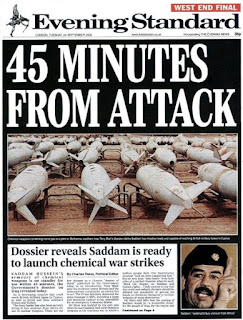Propaganda. When we think of this word we may think about the regime of Adolf Hitler in Nazi Germany. This, however, is far from the entire picture. Propaganda is everywhere. It's on the TV you watch, it's in the books you read, and worst of all: you walk around with it in your pocket 24/7. So what is this mysterious term? How does effect us in our everyday lives? According to the Oxford dictionary, propaganda is "information, especially of a biased or misleading nature, used to promote or publicize a particular political cause or point of view." Despite its connotation, propaganda isn't inherently political by definition. Let's look at one example where it wasn't.
It was the turn of the 20th century. A young Edward Bernays and his family moved to be closer to Edward's uncle, Sigmund Freud and capitalize on new opportunities. Bernays was a visionary of sorts. According to Britannica, he was the "first to develop the idea of the professional public relations counselor—i.e., one who draws on the social sciences in order to motivate and shape the response of a general or particular audience." This was big deal, and he certainly didn't let his chance go to waste. Shortly after the first world war, Bernays and his wife opened their own Public Relations office. Some of their clients included the US War Dept. and the Lithuanian government. Among other things, Bernays is also known for his promotion of the electric industry, Ivory Soap, and Big Tobacco. Out of all of his campaigns however, I believe the most impactful was his creation of the modern American breakfast. Yes, that's right! You've been told your entire life that breakfast is the most important meal of the day. What if I told you that wasn't the entire truth? This was a marketing scheme devised by Bernays and John Harvey Kellog to sell more breakfast foods. Think about that next time you have eggs, bacon, or cereal.
Let's pivot and examine propaganda in the more traditional sense. As I mentioned before, propaganda isn't only found in totalitarian regimes. It can also be seen in democracies... even the one that we live in today. One glaring example of this happening in the USA is our invasion of Iraq. In the early 1990's, President George H.W. Bush conducted a military invasion of Iraq. He claimed that the reason for this action was that Iraq was in possession of weapons of mass destruction. After the conflict had fully ended over a decade later, these weapons were never found.
Another striking example of propaganda in our nation is that of the Gulf of Tonkin. The US Naval Institute states "On 2 August 1964, North Vietnamese patrol torpedo boats attacked the USS Maddox while the destroyer was in international waters in the Gulf of Tonkin." Later on, "The United States government falsely claimed that a second incident occurred on 4 August, between North Vietnamese and United States ships in the waters of the Gulf of Tonkin." The first incident was the response of the Vietnamese to US covert operations in the area. The second however, was falsified and a large reason why the US got involved in the vietnam war.
If there's one thing you should take away from this is that propaganda is everywhere, even the places you don't expect. It's in the food we eat, the things we watch, and the people who lead us. Is that such a bad thing though? Some forms of propaganda are certainly harmful such as warmongering. Other's though, may not be such an issue. Modern day public relations and advertising are forms of propaganda and they benefit society. In the end, as long as you're doing it in an honest way and without harmful intentions, propaganda isn't all bad.









